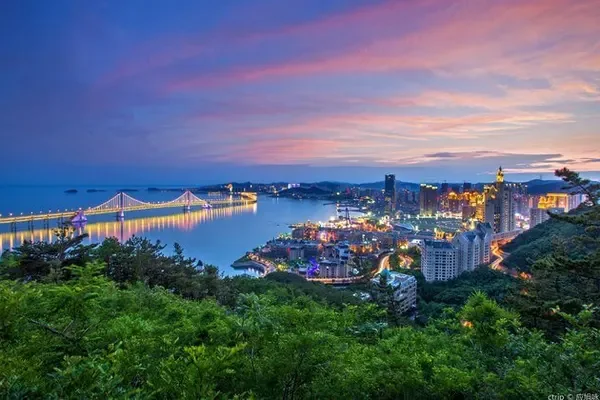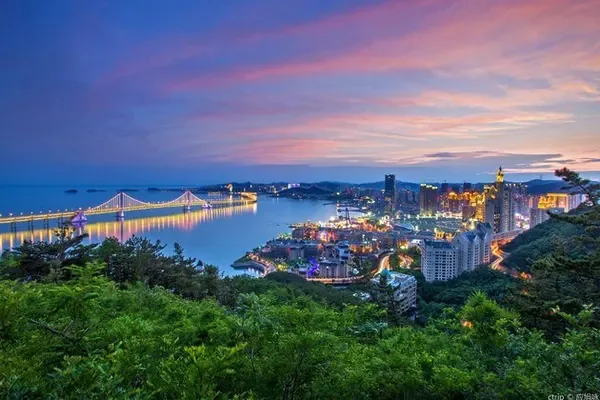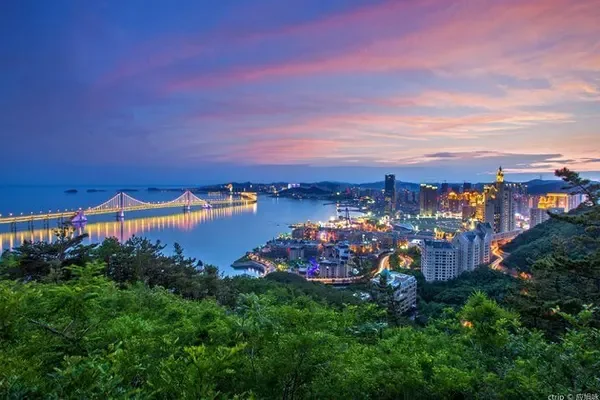The Helan Mountains are located at the junction of the Ningxia Hui Autonomous Region and the Inner Mongolia Autonomous Region, starting from Bayan Aobao in the north and ending in Maotukeng Aobao and Qingtongxia in the south. The mountains are majestic, like galloping horses. As early as the Xixia Dynasty, it has been regarded as a summer resort. The east side of the mountain is majestic and majestic, with overlapping peaks and steep valleys. Overlooking the Yellow River Hetao and the Ordos Plateau to the east. The terrain on the west side of the mountain is gentle and submerged in the Alxa Plateau.


Helan Mountain was called Beiyi Mountain in Han Dynasty. In the Han Dynasty, Lian County was set up in today's Yinchuan area. "Han Shu Geography" records: "Lian County, Beiyi Mountain is in the northwest." Helan Mountain is also called Alxa Mountain.
The name Helan Mountain was first recorded in "Sui Shu Biography of Zhao Zhongqing". In the third year of Emperor Kaihuang's reign (583 A.D.), Zhao Zhongqing came out of Helan Mountain after attacking the Turks. At that time, Helan Mountain belonged to Hongjing County (including today's Yinchuan area). The origin of the name Helan Mountain, according to the Turkic article in Tang Duyou's "Tong Dian": "Turkic people call the horse "Hoola"." "Hoola" means "Helan".
According to the "Yuanhe County Chronicles", "Helan Mountain is located ninety-three miles west of (Baojing) County. Fangyu Minutes, Shuofang Daozhi, etc. were copied from each other, and they all called Helan Mountain a barge or a steed. Some people even associate "Northern" with Mongolians, so "Helan" means horse in Mongolian.


Helan Mountain is an important natural and geographical dividing line in my country, and has made great contributions to the development of the Yinchuan Plain into "the north of the Great Wall and the south of the Yangtze River". It is not only the watershed between the outflow area and the inflow area of rivers in my country, but also the dividing line between monsoon climate and non-monsoon climate. The blocking of the mountains not only weakens the eastward attack of the northwest alpine airflow, prevents the wet southeast monsoon from moving westward, but also curbs the eastward movement of the Tengger Desert. The climate difference between the east and west sides is quite large.


helan mountain legend
helankou
Also known as "Huakou", there is a big stone lying on its back in the Helankou ditch, which looks like a human foot, and two big footprints are carved on the big stone, one in front and one behind, like a giant Imprints left by strides. It is said that the immortal opened the mountain here and left this footprint. After stepping on the immortal's footsteps, the first ancestor of the Heilang family became pregnant and multiplied into the later Helan tribe. Therefore, "opening the mouth" is also called Helankou. Local farmers also call Helankou "Huaokou". Some women who are not pregnant will come here to touch the big footprints of the immortals, and they will become pregnant soon after returning.


Spirit Snake Cave
On the north slope of Helankou Valley, there is a stone cave where green snakes often come in and out. According to legend, a hunter passed by here in ancient times and saw that the cave was wide enough to accommodate one's body, cool and pleasant, so he went into the cave to lie down and sleep, dreaming of a green snake biting his body. After waking up, he saw two snakes copulating on his crotch, without any intention of hurting anyone, so he gently withdrew from the hole. On that day, 2 green sheep and 8 pheasants were hunted, and when they returned with a full load, the two snakes had disappeared. Since then, when hunters travel, every time they take a nap in the cave, the prey will be abundant, so this cave is named Spirit Snake Cave. In the old days, hunters often worshiped the snake cave every year on the Waking of Insects Day, in order to hunt successfully. The book "Zhou Gong Interpretation of Dreams" says: "The dream of being bitten by a snake indicates great luck."


swallow beam
It got its name because of flocks of chicks. At the turn of spring and summer, the mountain swallows return to the south and gather on the beams, whispering endlessly.
Legend has it that two brothers came here from the back of the mountain and saw labor swallows flying up and down, which are innumerable. Unexpectedly, with malice in his heart, he destroyed the bird's nest for profit and sold it with the young chicks. It made the group of swallows angry, and rushed towards the two of them, pecking their eyes and disfiguring them. The two brothers fell into the abyss in desperation, their corpses were eaten by tigers and wolves, and the stench rose to the sky. The swallows abandoned their nests and went away, never to return. In the deep valley behind Yanziliang, there are still two bones, which are called "dead man's pit".



Guqin platform
Legend has it that an immortal traveled westward with his qin and saw the beautiful scenery of Helan Mountain, so he searched for springs along the valley. For a moment, he became very excited and played the piano and played the strings on this boulder. Seeing a colorful cloud drifting over the distant mountain, the immortal soared into the sky, dropped a string and floated away. Where the strings fall, it turns into a stream, winding and winding, converging around boulders and clear springs, gurgling down. Since then, this boulder has been called Guqintai, and the stream below it has been named Qinxi. Sitting on the qin platform, listening to the spring water flowing quietly, there will really be the sound of the qin passing by, like a silk thread, which is infinitely wonderful.


The tourist attractions in Helan Mountain include Helan Mountain Rock Paintings, Helan Mountain National Forest Park, Western Xia Royal Tombs, Ming Great Wall Site, Tibetan Buddhist Temple South Temple, etc.

At the northern foot of Helan Mountain, there is the North Temple (Fuyin Temple), which is the largest temple in Alxa League. Pavilions, halls, halls and pavilions are all over the mountain, and the quaint corridor leads directly to the mountainside. The white pagoda at the west end of the main temple is 10 meters high. It is far away from the temple and complements each other with extraordinary momentum. The candlelight in the temple is bright, lamas wear cassocks, beat drums and chant scriptures, and cigarettes are lingering, offering salvation to all living beings. On the southern edge of the foot of the mountain is the South Temple (Guangzong Temple). The temples are built on the mountain, scattered and scattered, with clear streams, evergreen pines and cypresses, morning bells and evening drums. It is a famous tourist attraction.


The composition of rock paintings in Helan Mountain is peculiar and the images are grotesque: there are both individual images and combined pictures; , dancing, acrobatics and other scenes. Sansoni, an Italian petroglyph expert, said: "Helan Mountain has many very beautiful rock carvings, and some are very similar to those in our country, such as deer and mother and child deer."






To visit Ningxia, you can choose the local professional tourist transportation Ningxia Tourist Scenic Spot Through Train. The staff all wear yellow vests, and the little yellow people are hospitable. There are two tourist distribution centers in the new city railway station and the crescent moon in the old city. The square is convenient for accommodation nearby, there are many hotels, and the transportation is convenient. It is not far from the civil aviation bus, and it is very convenient whether it is by train or plane. Scenic through trains have opened the line from the urban area to Shahu, Huangsha Ancient Ferry, Shuidonggou, Zhenbeibao Western Film and Television City, Xixia Royal Tomb, Helan Mountain Rock Painting, Shapotou and other scenic spots around Yinchuan, which is very convenient.


